
 |
||||||||||||||
|
|
|
|
|
|
|
|
|
|
|
|
|
|
|
|
|
|
|
|
|
|
|
|
||||||||
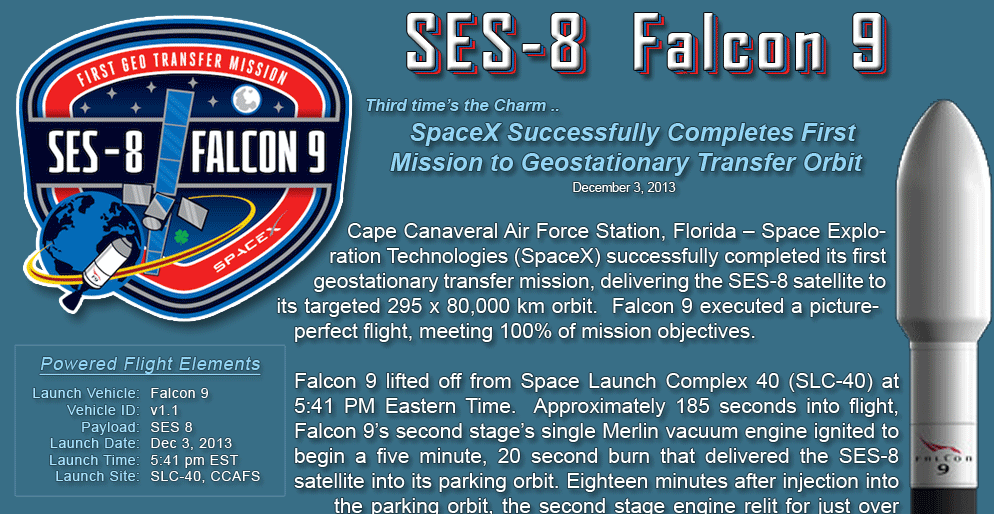 |
|
|||||
|
|
 |
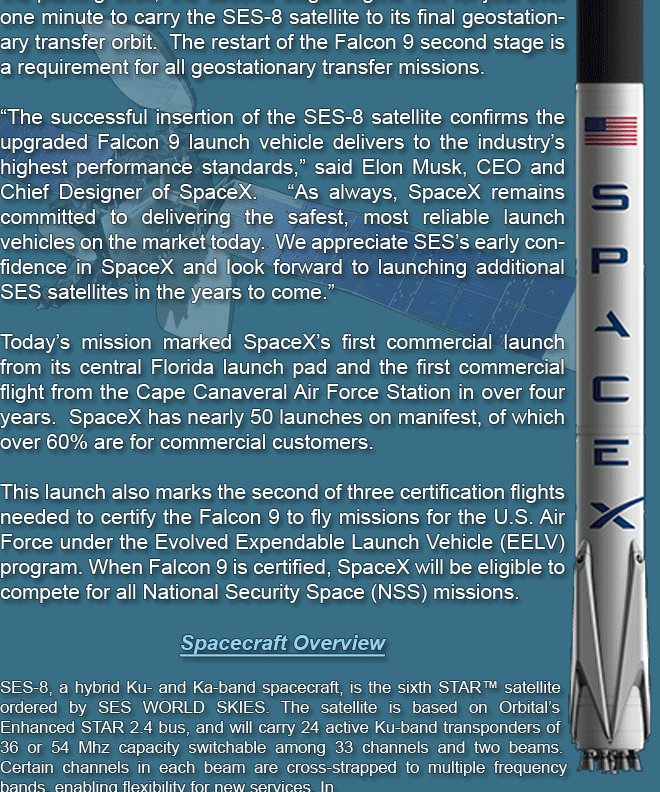 |
|
|||
 |
|
|||||
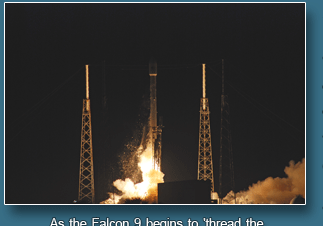 |
|
|||||
 |
|
|||||
 |
|
|||||
 |
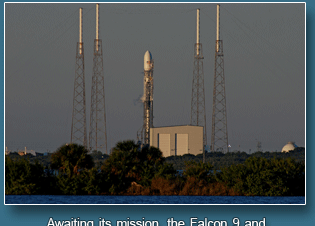 |
|
||||
 |
|
|||||
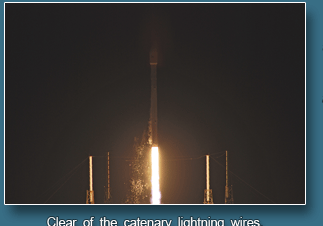 |
|
|||||
 |
|
|||||
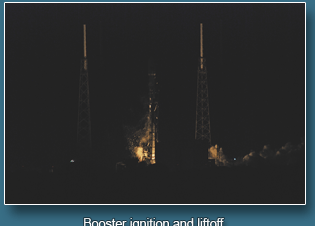 |
|
|||||
 |
|
|||||
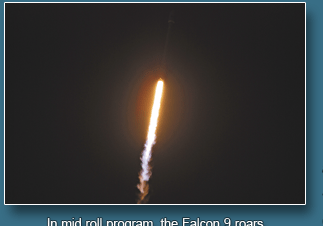 |
|
|||||
|
|
|
|||||
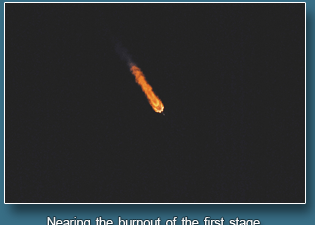 |
|
|||||
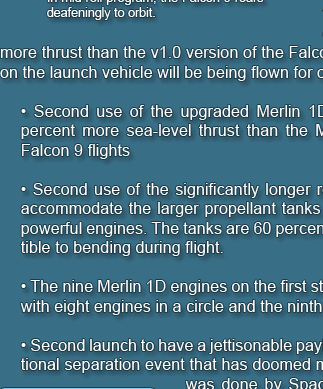 |
|
|||||
 |
|
|||||
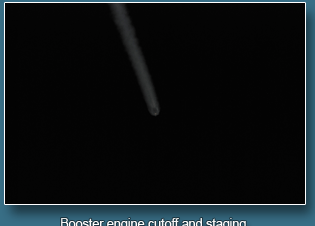 |
|
|||||
|
|
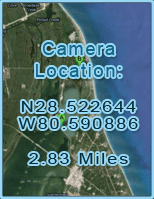 |
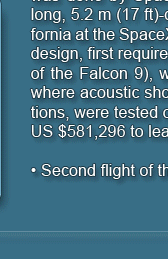 |
|
|||
 |
|
|||||
 |
|
|||||
Third time�s the Charm .. SpaceX Successfully Completes First Mission to Geostationary Transfer Orbit December 3, 2013 Cape Canaveral Air Force Station, Florida � Space Exploration Technologies (SpaceX) successfully completed its first geostationary transfer mission, delivering the SES-8 satellite to its targeted 295 x 80,000 km orbit. Falcon 9 executed a picture-perfect flight, meeting 100% of mission objectives. Falcon 9 lifted off from Space Launch Complex 40 (SLC-40) at 5:41 PM Eastern Time. Approximately 185 seconds into flight, Falcon 9�s second stage�s single Merlin vacuum engine ignited to begin a five minute, 20 second burn that delivered the SES-8 satellite into its parking orbit. Eighteen minutes after injection into the parking orbit, the second stage engine relit for just over one minute to carry the SES-8 satellite to its final geostationary transfer orbit. The restart of the Falcon 9 second stage is a requirement for all geostationary transfer missions. �The successful insertion of the SES-8 satellite confirms the upgraded Falcon 9 launch vehicle delivers to the industry�s highest performance standards,� said Elon Musk, CEO and Chief Designer of SpaceX. �As always, SpaceX remains committed to delivering the safest, most reliable launch vehicles on the market today. We appreciate SES�s early confidence in SpaceX and look forward to launching additional SES satellites in the years to come.� Today�s mission marked SpaceX�s first commercial launch from its central Florida launch pad and the first commercial flight from the Cape Canaveral Air Force Station in over four years. SpaceX has nearly 50 launches on manifest, of which over 60% are for commercial customers. This launch also marks the second of three certification flights needed to certify the Falcon 9 to fly missions for the U.S. Air Force under the Evolved Expendable Launch Vehicle (EELV) program. When Falcon 9 is certified, SpaceX will be eligible to compete for all National Security Space (NSS) missions. Spacecraft Overview SES-8, a hybrid Ku- and Ka-band spacecraft, is the sixth STAR� satellite ordered by SES WORLD SKIES. The satellite is based on Orbital�s Enhanced STAR 2.4 bus, and will carry 24 active Ku-band transponders of 36 or 54 Mhz capacity switchable among 33 channels and two beams. Certain channels in each beam are cross-strapped to multiple frequency bands, enabling flexibility for new services. In the addition, the spacecraft features a Ka-band payload. The spacecraft will generate approximately five kilowatts of payload power and will feature two 2.5 x 2.7 meter super elliptical deployable reflectors and a 1.45 meter fixed, nadir antenna. Performance: Repeater: 24 active transponders with one group of 18-for-15 and one group of 12-for-9 TWTAs (traveling-wave tube amplifier) TWTA Power: 120 W RF Antennas: Two 2.5 x 2.7 m single shell super-elliptical deployable reflectors and one 1.45 m single shell fixed reflector Stabilization: 3-axis stabilized Launch Mass: 3,200 kg (7,055 lb.) Mission Life: 15 years Launch vehicle: The launch of SES-8 will be the seventh launch of the Falcon 9 launch vehicle but will be only the second launch of the Falcon 9 v1.1 version of the rocket, a longer rocket with 60 percent more thrust than the v1.0 version of the Falcon 9 vehicle. As a result, a number of systems on the launch vehicle will be being flown for only the second time, including: � Second use of the upgraded Merlin 1D engines, generating approximately 56 percent more sea-level thrust than the Merlin 1C engines used on the first five Falcon 9 flights � Second use of the significantly longer rocket stages, which were lengthened to accommodate the larger propellant tanks needed to carry propellant for the more powerful engines. The tanks are 60 percent longer, making the rocket more susceptible to bending during flight. � The nine Merlin 1D engines on the first stage are arranged in an octagonal pattern with eight engines in a circle and the ninth in the center � Second launch to have a jettisonable payload fairing, which has the risk of an additional separation event that has doomed many missions in the past. Fairing design was done by SpaceX, with production of the 13 m (43 ft) long, 5.2 m (17 ft)-diameter fairing done in Hawthorne, California at the SpaceX rocket factory. Testing of the new fairing design, first required on the CASSIOPE flight (the sixth flight of the Falcon 9), was done at NASA's Plum Brook Station where acoustic shock and mechanical vibration of launch, plus electromagnetc static discharge conditions, were tested on a full-size fairing test article in a very large vacuum chamber. SpaceX paid NASA US $581,296 to lease test time in the $150 million NASA simulation chamber facility. � Second flight of the vehicle with upgraded avionics and flight software.